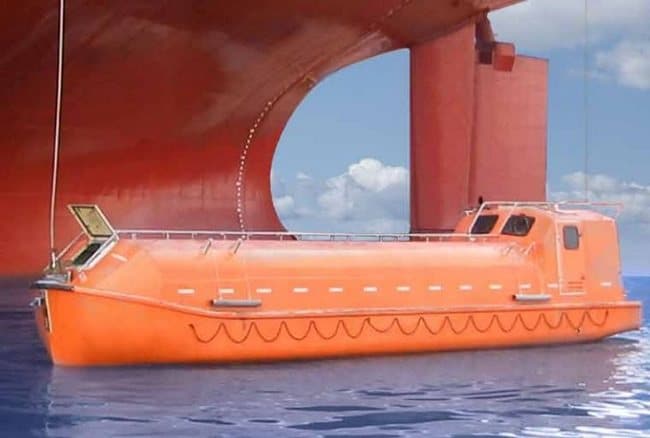Measures to Stop Accidents on Lifeboats
Lifeboats, though designed with a view to saving you from trouble at sea, are not infallible. Nothing is. Of course, they do their job and they do it well, but this is not to say that they cannot themselves be involved in an accident.
Thankfully, the vast majority of accidents on lifeboat occur during drills, perhaps because people are less alert than they’d normally be because it’s not a “real” situation. People can become lax when partaking in something that is more or less a routine operation.
The fact that these accidents more frequently take place during practices means that fatalities tend to be lower, although they do still occur, taking the lives of trained professionals.
You will never be able to prevent all accidents on lifeboats from occurring; the best you can do is come prepared and know the main causes of them – forewarned is forearmed.
The Main Causes of Lifeboat Accidents
A recent study published by the International Maritime Organization and the Maritime Safety Committee stated that the following categories cover the overwhelming majority of lifeboat accidents that involved the injury or death of a crew person:
- the failure of the on-load release mechanism;
- the accidental usage of the on-load release mechanism;
- the insufficient maintenance of lifeboats, launch equipment and davits;
- failures in communication;
- a lack of familiarity with lifeboats and the associated equipment;
- unsafe practices during lifeboat inspections and drills; and
- other design faults.
All of the above causes of accidents on lifeboats are easily preventable. But the question still remains: how do you prevent these accidents from occurring altogether?
How to Prevent Lifeboat Accidents?
The Committee came up with several methods in which they could increase the safety of lifeboat operation and cut down on the potential accidents on lifeboats. The first thing they did was to write a circular, then they asked Member Governments to bring said circular to the attention of any and all relevant parties, such as industry organizations and ship crew-members.
Included in that circular were the following instructions:
- ensure that the on-load release mechanism is in compliance with the various requirements of the LSA Code (specifically paragraphs 4.4.7.6.2.2 – 4.4.7.6.5);
- make sure that all relevant information regarding the adjustment and maintenance of lifeboats and associated equipment is available onboard;
- all personnel carrying out inspections and maintenance of the lifeboat and associated equipment must be both fully trained in and familiar with said duties;
- the maintenance of lifeboats and associated equipment must be carried out in adherence to the approved practices;
- health and safety requirements apply to drills as they do to “real” procedures;
- lifeboat drills must be conducted in accordance with the SOLAS regulation III/19.3.3;
- any personnel carrying out maintenance or repair must be qualified for the job;
- hanging-off pennants should be used only for maintenance, not during training;
- lifeboat inspection must be regular and thorough;
- all equipment must be durable in rough conditions and easily accessible; and
- all tests for safety and life-saving equipment must be conducted rigorously to guidelines, newly created by the International Maritime Organisation.
What Else Can Be Done?
For the most part, accidents on lifeboats can be prevented simply by exercising some caution and common sense.
Make sure that everything on your lifeboats – both fixed and loose – is functioning as it should, and give the boat an inspection to ensure that the power supply, the engine, the steering and the bailing mechanism are all working correctly.
Keep crew down to a sensible level to avoid over-crowding, and regularly check over the davits; if you see any corrosion or defamation, set to work repairing them and ensure they’re well-lubricated.
What steps will you take to prevent lifeboat accidents on ships? Let us know in the comments below.
You may also like to read – The Automated External Defibrillator: Saving Lives – At Sea
Disclaimer: This post may contain affiliate links, meaning we get a small commission if you decide to make a purchase through our links, at no additional cost to you. You can read our full disclaimer here.
Do you have info to share with us ? Suggest a correction
Latest Ship Safety Articles You Would Like:

About Author
An ardent sailor and a techie, Anish Wankhede has voyaged on a number of ships as a marine engineer officer. He loves multitasking, networking, and troubleshooting. He is the one behind the unique creativity and aesthetics at Marine Insight.
Subscribe To Our Newsletters
By subscribing, you agree to our Privacy Policy and may receive occasional deal communications; you can unsubscribe anytime.





















The best thing IMO could do is to allow only one design of lifeboat and only one on-load, off-load design. The Nadiro swing in ball system is the best design out there. u just cant go wrong with this simplified system.
NO L/BOAT has to be moved with crew on board during drills;Do no let any crew on board while lowering/retriving totally enclosed l/boats;lower em up to sealevel,then make essential crew joining by mean of embarkation ladder;upon completion,crew will desembark through same ladder…think about..simple but never applied
My point of view on lifeboat drill.
1.To understand your lifeboat system well.
2. To apply good standard practice during drill which manned can be avoided.
3. Try to find out more during annual servuy of the lifeboat from OEM.
4. Owner should avoid hiring 3 parties for the servuy.
5. Refer to world famous lifeboat manufacturers and its available service stations.